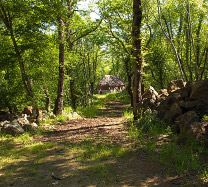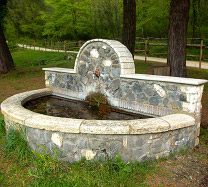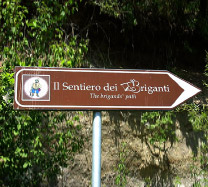B&B Predio San Fernando

Brigand's Path
The “Brigands’ Path” starts and ends among nature. It begins in the Monte Rufeno Nature Reserve and leads to the WWF-protected area of Vulci, passing by the shores of the Bolsena lake, through the Lamone Forest and crossing the fertile lands of the Maremma. Different landscapes that, between the end of the XIX century and the beginning of the XX century, witnessed the rise, development and fall of the sorry phenomenon of brigandage, connected to the notorious memory of felons coming from poverty and misery. It could be seen as an infection, an epidemic and a recovery that left permanent traces in many areas of the northern part of the Lazio region, still fomenting great passions and stories that sound like legends.
Deeply affected by the barely tolerable living conditions that characterized the poorer classes, often forced to be on the run as victims of any kind of injustice, these scoundrels - as soon as they became officially brigands - threatened, stole, kidnapped, raped, beat, wounded and killed people only to live as best as they could, protecting their own interests and those of their protégés, in the face of all the honest people who struggled to live with dignity, even if in total poverty. They were against the State, the Church, and every other institution and were not ashamed to work for important landowners to put down the claims of the poor workers.
The finest example of this subtle criminal art, an actual “Mafia-like criminal association” ante litteram, was Domenico Tiburzi da Cellere, also know as the “re del Lamone” (King of the Lamone). As skilled and clever as cold and bloodthirsty schemer; definitely nothing like Robin Hood, to whom he has been compared by some cynical and superficial writers.
The “Brigands’ Path” consists mainly of cross-country paths, which can be enjoyed on foot or riding a mountain bike or a horse, very rarely connected one another by ordinary roads. The path is constantly marked by direction signposts at the crossroads as well as by information panels that tell the story of these places, explain their nature, illustrate the feature of the villages and remind the dramatic events that involved the most notorious brigands of Tuscia.



